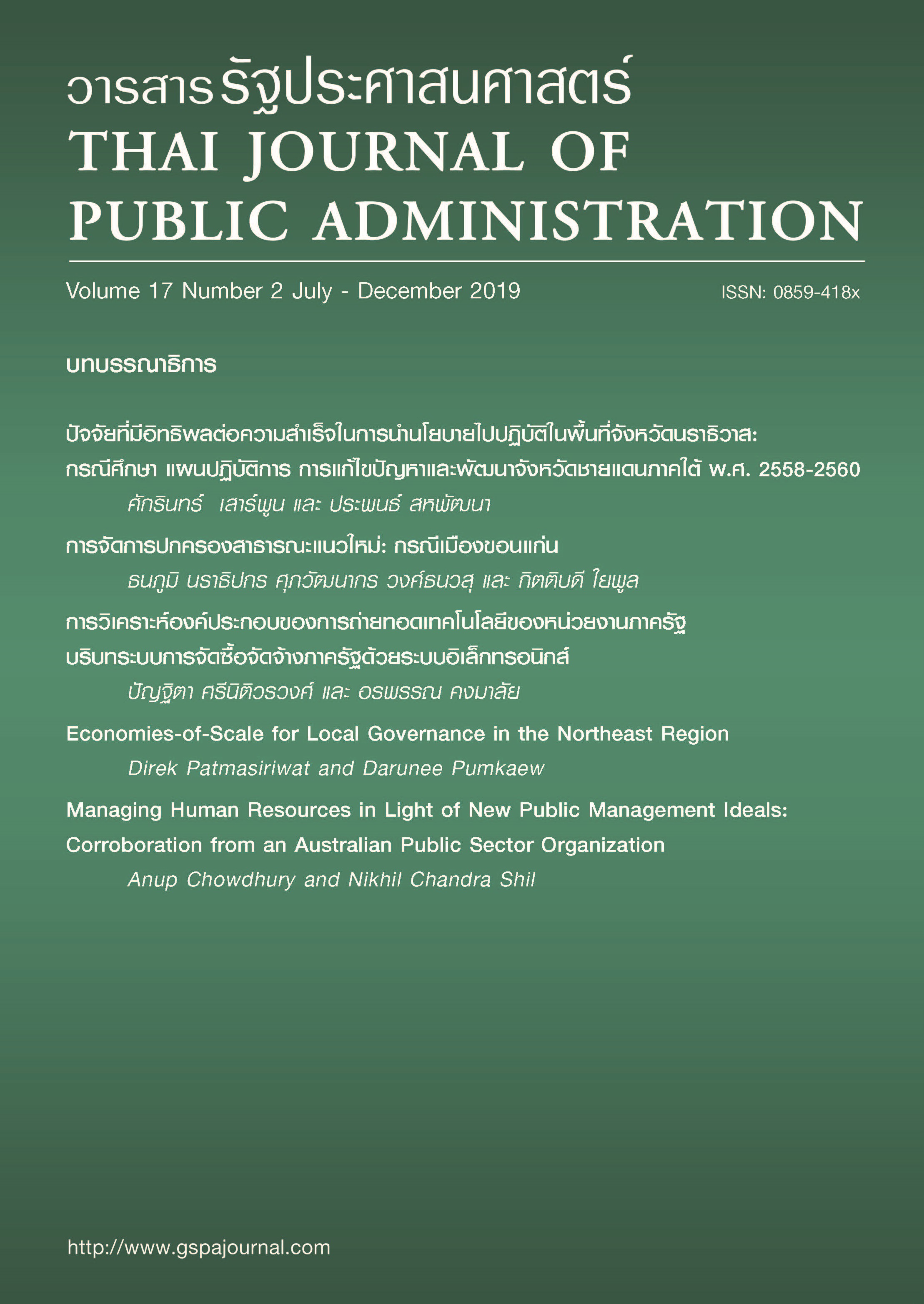Economies of Scale for Local Governance in the Northeast Region of Thailand
Keywords:
Economies-of-scale, amalgamation process, citizenry referendum, local administration in Northeast ThailandAbstract
This case study is set for two objectives. First, to test the hypothesis of economies of scale in local administration with a focus on the Northeast region of Thailand. We assume there are potentials gain from local amalgamation and that the benefit may outweigh costs of transformation. An econometric model is used to estimate the relationship of the cost of local public goods; specifically, i) staff per 1,000 population ii) personnel expenses relative to the population iii) service expenditure per population are treated as dependent variables and tested against a set of explanatory variables. The second objective is to obtain data on the progress of three local units in Ubon Ratchathani province that have planned to merge: Khamyai Tambon Municipality, Patum Tambon Municipality and Rainoi Sub-District Organization. We use quantitative and qualitative information from site visits and interviews with top administrators about the motivations, expectations, and process of amalgamation. The research findings show that increases in population size may lead initially to a reduction in local administrative organizations’ costs, resulting in economies of scale; moreover, larger local administrative organizations may enjoy greater economies of scale than is the case for smaller local administrative organizations.
References
Blesse, S., & Baskaran, T. (2013). Do Municipal Mergers Result in Scale Economies? Evidence from a German Federal State. Discussion Paper, 2013.
Department of Local Administration. (2016). Local Administrative Organization’s Revenue in Fiscal Year 2016. Retrieved May 12, 2018 from http://www.dla.go.th/
work/money/data/03/Summary_59.pdf.
Dye, T. R. (1978). Understanding Public Policy. New Jersey: Prentice Hall Inc,
Oates, W. E. (1972). Fiscal Federalism. New York: Harcourt, Brace and Jovanovich.
Patamasiriwat, D. et al. (2016). Economies of Scale for Local Governance in Thailand. Full Research Paper. The Thailand Research Fund.
Reingewertz, Y. (2012). Do municipal amalgamation work? Evidence from municipalities in Israel. Journal of Urban Economics, 72, 240-251.
Steiner, R., Kaiser, C., & Eythorsson G. T. (2016). A comparative analysis of amalgamation reforms in selected European Countries. In Kuhlmann, S., & Bouckaert, G. (Eds.). Local Public Sector Reforms in Times of Crisis. London: Palgrave Macmillan.
The National Reform Steering Assembly. (2016). The National Reform Steering Commission on Local Government’s Report: Structure and Authority of General Type of Local Administrative Organization. (August 22, 2016). Retrieved March 16, 2018 from https://library2.parliament.go.th/giventake/content_nrsa2558/d082259-03.pdf.



